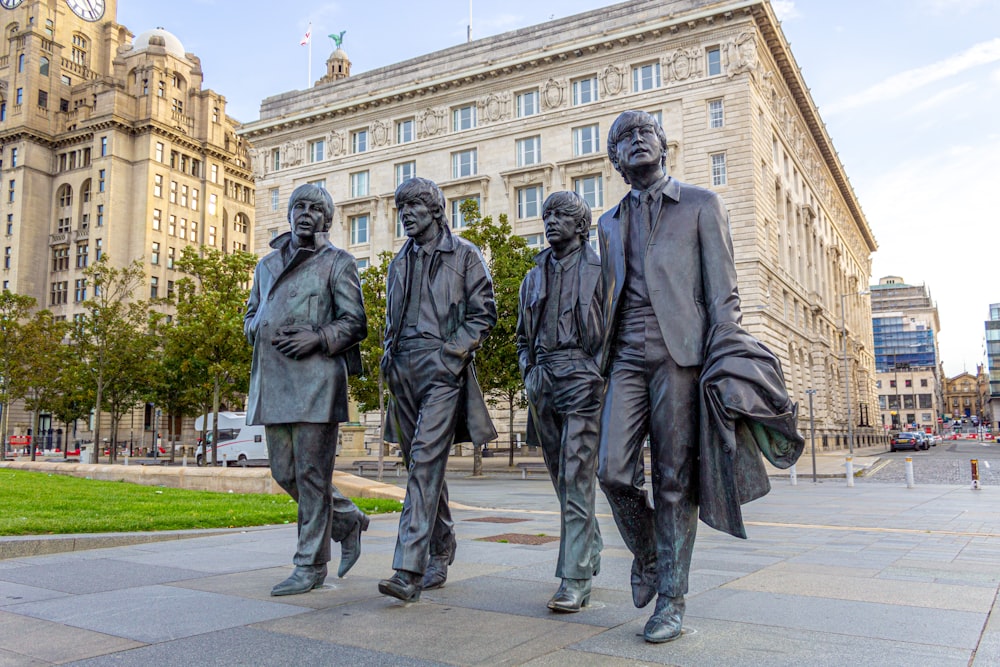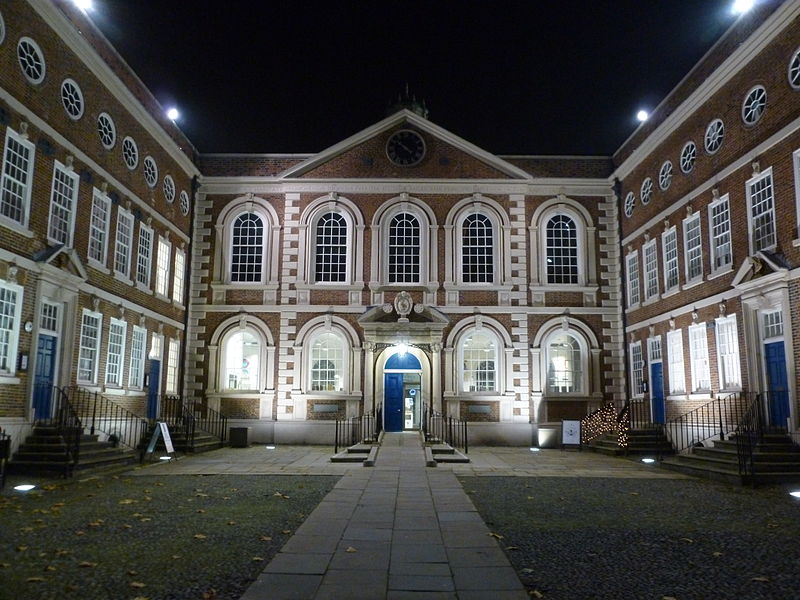
Photo by Neil Martin on Unsplash
10 Oldest Buildings to visit in Liverpool
Liverpool’s history began in 1207 when England’s king chartered a town there.
Liverpool offers more listed buildings than any other UK city outside of London.
The historic architecture is a symbol of our past and an essential part of our city’s future.
From former manor houses to ancient churches and shipping line headquarters, there are so many magnificent Liverpool buildings that have fascinating stories to tell.
Thanks to the many remarkable buildings that define the landscape, Liverpool has become popular for various movie productions.
There are over 2500 listed buildings in Liverpool, England.
A listed building is one considered to be of special architectural, historical or cultural significance, which is protected from being demolished, extended or altered unless special permission is granted by the relevant planning authorities.
If in Liverpool make a point of visiting these 10 oldest buildings in Liverpool.
1. Speke Hall – 1530

Image by Rodhullandemu from Wikimedia
Speke Hall is a beautiful Tudor manor house that many regard as one of the finest surviving Liverpool buildings of its kind.
The Norris family built and owned the property for many generations.
Speke Hall remained in the Norris family’s possession until the female heiress married into the Beauclerk family.
In 1795, the Watt family purchased the property from the Beauclerks, however, when the last surviving heir of the Watt family died in 1921, the house and estate were left in a trust for 21 years.
In 1942, the National Trust received ownership of the house but did not take full responsibility for the property until 1986.
It is open to the public for viewing while on-site the Home Farm building hosts a shop, restaurant and reception.
2. Croxteth Hall – 1575

Image by Rept01 1x from Wikimedia
The oldest part of the Hall was built in 1575 and as additional wings were added, it transformed over the centuries from an Elizabethan hunting lodge to the elegant building seen today.
Offering a mixture of Tudor, Georgian and Queen Anne styles, the hall is easily one of the most beautiful Liverpool buildings.
On 9th October 1851, Queen Victoria, Prince Albert and their children stayed at Croxteth Hall before visiting Liverpool the next day.
The vast north range, designed by John MacVicar Anderson, was added in 1902-04 by the 5th Earl.
The addition of this build closed the original courtyard and Croxteth Hall became a fully equipped Edwardian mansion.
Tragedy struck the Hall in 1952 when a fire started in the west wing and gutted many of the important interiors in Croxteth Hall.
This area is now the fabulously restored, Queen Anne Suite.
Croxteth Hall and Country Park is still open to the public to this day.
3. Tue Brook House – 1615

image by Rodhullandemu from Wikimedia
This yeoman’s house was built in 1615 and is the oldest dated house in Liverpool.
It is made from limewashed stone with sandstone dressings and has a stone slate roof.
It consists of a central hall with 2 cross wings. The front windows are low and mullioned.
Tue Brook house has wooden gutters and downpipes. It is said to have a Priest’s hiding place in the chimney breast.
It was used as a farmhouse for many years and is now a home surrounded by semi-detached houses
There were plans to open the historic property up to the public but sadly these plans came to a cropper. Today, the house is owned by a local family.
4. Toxteth Unitarian Chapel – 1618

Image by NeilEvans from Wikimedia
Set on Park Road in Dingle, Toxteth Unitarian Chapel dates back to 1618 and was known as The Ancient Chapel of Toxteth until the 1830s.
In 1611, a group of Puritan farmers began the construction of the school and appointed 15-year-old Richard Mather as its master.
Mather attended Brasenose College, Oxford during its construction and returned to the area in 1618 once the chapel was built.
In 1672, the chapel was enlarged to accommodate dissenters from central Liverpool.
However, as more chapels were built across Liverpool, the Toxteth Unitarian Chapel was neglected and soon fell into disrepair.
The chapel holds Unitarian services every fortnight.
Visitors can explore the historic chapel during Heritage Open Days. Services continue to be held at the chapel every fortnight.
5. Woolton Hall – 1704
Richard Molyneux purchased the 400-acre estate in 1700 and built Woolton Hall in 1704.
Following Richard’s death in 1738 and his widow’s death in 1766, Nicholas Ashton, the High Sheriff of Lancashire, acquired the land and property.
Ashton redesigned the interior and added a new frontage in 1772 and the building remained in the family until the late 19th century.
The hall later fell into disrepair and was scheduled for demolition until it was rescued by John Hibbert in 1980, who also spent £100,000 renovating the property.
However, in 2021, the building was declared at “immediate risk” by Historic England.
6. Bluecoat Chambers – 1716

Image by Charles Hutchins from Wikimedia
In 1718, there were extensions to create a boarding school and by 1719, Bluecoat Chambers enrolled 50 children, with enough space for 100 more.
Despite calls to demolish the building, a successful campaign to raise money to save Bluecoat Chambers was made, resulting in the establishment of the Bluecoat Society of Arts in 1927.
The concert hall and its adjoining rooms were damaged during the Liverpool Blitz.
Thankfully, restoration of the building took place in 1951, and the Bluecoat received Grade I listed status one year later on 28th June 1952.
In 1959, The Bluecoat Display Centre opened in the rear courtyard, offering a contemporary craft gallery.
Bluecoat Chambers became known as the Bluecoat Arts Centre in the 1980s but has been known as The Bluecoat since 2007.
7. Liverpool Town Hall – 1754

Image by tom heyes from Wikimedia
Liverpool Town Hall is a remarkable building in the city. Situated at the junction of Dale Street, Castle Street and Water Street,
The town hall that stands today was originally constructed from 1749 to 1754 and was designed by “one of the outstanding architects of the day”, John Wood the Elder.
The hall has played host to many historic moments, including the bombardment of striking seamen during the 1775 Liverpool Seamen’s Revolt.
The final act of the American Civil War was also at Liverpool Town Hall, as Captain Waddell walked up the steps in November 1985 and presented a letter surrendering his ship, CSS Shenandoah, to the British government.
The building has received a number of improvements over the centuries, such as the introduction of the Hall of Remembrance to commemorate servicemen who lost their lives during WWI.
Presently, every seven weeks, Liverpool City Council meet at Liverpool Town Hall.
The public can also enjoy a tour of the hall, which is also licensed for weddings.
8. Rodney Street’s Georgian Townhouses – 1783
The street was laid out in 1783-1784 by William Roscoe, who named the street after Naval officer George Brydges Rodney.
The street offered affluent housing located away from the old town centre, with some houses featuring five bays and central doors.
You can’t walk down Rodney Street and not fall in love with the street’s Georgian architecture.
There are an incredible 60, Grade II listed buildings and one Grade II* listed church in this stunning area.
Many famous faces lived on these historic streets, including poet Arthur Clough and photographer Edward Chambre Hardman.
Rodney Street was also the birthplace of William Ewart Gladstone, who served as Prime Minister of the United Kingdom on four occasions between the 1860s and 1890s.
Many films and TV feature the historic street e.g Peaky Blinders.
9. St Peter’s Church (Alma de Cuba) – 1788
Built-in 1788 by Rev A.B MacDonald, St Peter’s served as a Catholic place of worship until 1976.
The architecture of the church followed a simplistic structure, with basic brickwork and few unique features.
However, over the years the church was enlarged and fitted with beautiful features including stunning stained glass windows and a magnificent altar.
In 1864, The Lady Chapel was built, followed by The Lady Altar which was built in 1898 in commemoration of the 50th Anniversary of Ft Anderson’s entering the Order of St Benedict.
During the Blitz of 1940-1941, St Peter’s was notably damaged by bombs.
It was repaired in later years and went on to serve Liverpool’s local Polish community.
It was fittingly renamed Our Lady of Czestochowa, earning the affectionate nickname ‘the Polish Church’.
After falling into a period of disuse and closing its doors in 1978, the church was de-consecrated in 1993.
Today the building hosts Alma de Cuba which is undoubtedly one of Liverpool’s most vivid and vibrant social venues.
10. The Lyceum – 1800

Image by Rodhullandemu from Wikimedia
The Lyceum was constructed in 180o to serve as a newsroom and England’s first subscription library.
The neo-classical building was designed by architect Thomas Harrison; his original design has the building facing Church Street, but it was later modified to suit the public’s needs.
The building opened in 1802; however, it later became a gentleman’s club. In 1952, the club relocated, which resulted in The Lyceum being left unoccupied for a number of years.
By the 1970s, there were calls to demolish the building, but a campaign ensured the safety of the building, which reopened as a post office in 1984.
Sadly, following the restructuring of the country’s post offices, The Lyceum was sold back to the original developers, who continued to request the building’s demolition.
The Lyceum continues to dominate Bold Street, but unfortunately still lies unoccupied.
Liverpool is one of the best cities in the world for architecture. With architecture in the city as far back as 1500 still standing, Liverpool really does have some stunning buildings.
Even though some buildings are on the outskirts of the city, they are definitely worth a visit.
Visit Liverpool the city of The Beatles, culture and sport, Liverpool has something for every group.
The vibrant waterfront centred around the Royal Albert Dock, it’s full of hotels, shops, restaurants and museums and is home to exciting events.
Planning a trip to Paris ? Get ready !
These are Amazon’s best-selling travel products that you may need for coming to Paris.
Bookstore
- The best travel book : Rick Steves – Paris 2023 – Learn more here
- Fodor’s Paris 2024 – Learn more here
Travel Gear
- Venture Pal Lightweight Backpack – Learn more here
- Samsonite Winfield 2 28″ Luggage – Learn more here
- Swig Savvy’s Stainless Steel Insulated Water Bottle – Learn more here
Check Amazon’s best-seller list for the most popular travel accessories. We sometimes read this list just to find out what new travel products people are buying.










